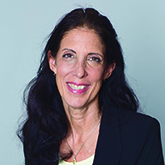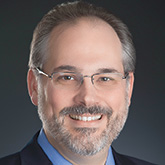The critical need to support healthcare workers during & after the pandemic
In the early days of the COVID-19 pandemic, healthcare workers were exhausted and depleted—but they were also hailed as heroes. Community members clapped and cheered them on at shift changes. They put up yard signs with appreciation messages and sent meals to hospitals to express gratitude.
Two years later, despite the advent of groundbreaking vaccines, the pandemic continued. Vaccine hesitancy and the emergence of COVID variants again sent case numbers and hospitalizations skyrocketing. Healthcare workers covered extra shifts to make up for colleagues who were calling in sick or quitting. Meanwhile, the community stopped showing up. And many workers even faced backlash as mask-wearing and encouraging vaccination became politicized. The result: Burnout and stress levels have risen to new heights, reminding healthcare organizations of the critical need to continue to support their staff.
The prolonged burden

One of the biggest challenges for front-line workers is operating within the expectation that they are resilient and must withstand any circumstance. Given their mission-based work, healthcare staff are in the business of putting others first and just handling whatever comes their way, says Patricia Watson, Ph.D., Senior Educational Specialist for the National Center for PTSD.

However, that mode of operation can come at great personal risk. According to Jeff Murawsky, M.D., Division Chief Medical Officer for the Far West Division of HCA HealthCare, persistent stress can lead to stress disorders, anxiety and posttraumatic stress disorder (PTSD). It can also lead to impaired judgment at work.
“There is a mental health burden that occurs with all healthcare workers who are out there in front, dealing with very difficult things every day,” he says.
As incident commander at HCA Healthcare’s Sunrise Hospital during the 2017 Las Vegas Harvest Music Festival mass shooting tragedy, Dr. Murawsky saw a crisis situation that brought 250 people flooding in for critical care in just one hour. This high-stress event was extremely taxing on the team, and the hospital had to respond. In addition to supporting staff with an acute need for counseling, Sunrise focused on immediate and simple needs like making sure they drank water while working. The increased and urgent workload mostly returned to normal after about two months, as hospitalized patients were discharged.
The prolonged nature of the COVID crisis has presented a new kind of dilemma for healthcare workers, and there’s a difference in the stress experienced in short-term versus long-term events. With COVID, the stress is like running a marathon, not a sprint, Dr. Murawsky says, and requires that healthcare organizations increase support and communication efforts to healthcare workers.
“We need to be careful not to underplay how significant the stress of the pandemic is, and we need to make sure we’re more open and regular about communicating with our team members,” he says. Those messages need to include acknowledgement of the stressful conditions, the toll they can take on a person and ensuring that team members are taking care of themselves, including eating and getting enough sleep—especially as community support has waned.
How healthcare staff can respond to stress levels
After serving in the military and seeing military members experience stress, Watson began working at the National Center for PTSD (NCPTSD) and created a Psychological First Aid field guide for post-disaster settings with colleagues from NCPTSD and the National Child Traumatic Stress Network (NCTSN).
Watson later collaborated with experts around the world to develop guidelines for ongoing adversity that were centered around five “essential elements” that seem to be related to better recovery from stress and adversity. These essential elements were included in a Stress First Aid (SFA) self-care and coworker support model for those who work in high-stress occupations, such as healthcare providers. The model seeks to create a flexible framework that guides people to use the five essential elements in creative ways depending upon the context—to move toward a greater sense of psychological safety and calm, connect with social support, improve sense of competence or self-efficacy, and foster hope, meaning and confidence.
“The aim of the model is not to tell people what to do, but to help people understand that these elements are important, particularly in ongoing stressful circumstances,” Watson says. “It aims to highlight and bring forward those small moments of understanding and support, and to help people think about how they can improve their situation and that of their colleagues.”
The program incorporates a stress continuum model with color zones, so people can understand that everyone goes through different levels of stress, and if they have a sense of their place on the continuum, they will be better equipped to understand, adjust, talk about and mitigate stress.
Knowing your place on the continuum at any given moment can also help you recognize when to ask for help.
“We know that resilience isn’t global. Most of us go in and out of being resilient depending on an ever-changing spectrum of circumstances and factors,” Watson says. “Additionally, stress reactions can manifest in different spheres in our lives.” For instance, a person may do well on the job even when under considerable stress, but their personal life can be affected by their stress levels, or vice versa.
“In this model, we acknowledge that what you do for support and self-care might change depending upon what zone of stress you are in,” Watson adds. For those in orange or red zones, taking a few deep breaths won’t have the same impact as it would for those in a green or yellow zone. People in the orange and red zones will need more significant and varied resources and actions, such as support from coworkers, mentors and possibly professionals.
Referring to the stress continuum zones at work can also be a shorthand way for staff members to signal how they feel.
“You don’t have to get personal and give details, but you can say to a coworker, ‘I’m in the orange zone,’ ” Watson explains, which can be a signal for a coworker to use the SFA model to offer support. An entire team could be in the orange zone based on work stressors, which can prompt workers and supervisors to help problem-solve ways for the organization to provide support and to make changes that reduce worker stress. The goal of SFA is to reduce the stigma of stress reactions and to find strategies or simple actions to help bring people into the green or yellow zones.
While formal training is available for the SFA program, healthcare systems can incorporate elements from it with a free online resource. A number of large hospital systems have used SFA throughout the pandemic and have appreciated its flexible, practical approach and its acknowledgment that self-care, coworker support and organizational support are all crucial in extended high-stress circumstances.
At hospitals within HCA Healthcare’s Far West Division, regular emails are sent to staff with information about mental health and wellness resources like the employee assistance program (EAP), as well as frequent reminders to get enough sleep, access healthy food and to take their breaks, Dr. Murawsky says. It has been an important effort not only for the clinical staff but also for the nonclinical support staff. They too have put in extra hours during the pandemic and are also experiencing levels of burnout.
Prior to the pandemic, HCA Healthcare was conducting drills and table-top exercises for mass-casualty and pandemic-type events, to ensure the health system had the needed resources and that staff understood what actions to take and what to expect in these situations. “We did pandemic flu exercises for years. Preparing and drilling helps people understand that they will experience stress after these events and that we have resources to help,” Dr. Murawsky explains.
Leading by example
People in healthcare roles are often less likely to recognize the need to care for themselves, yet social support is consistently one of the strongest protective factors in both burnout and exposure to significant adversity, says Watson. The support that mentors and supervisors offer is particularly important. That might mean offering ideas for managing difficult experiences, helping problem-solve particularly difficult cases or situations, helping the person regain their sense of meaning and purpose, or helping someone realize that they are being too hard on themselves.
Checking in on a colleague doesn’t require a mental health background. You can also inform coworkers about more intensive support by referring them to other resources in the system, whether through an EAP, a doctor, a spiritual or religious advisor, or a mental health provider. “You can be a huge influence in helping bridge people to the care that will be helpful for them,” she adds. We know that getting people into mental health treatment earlier rather than later can often prevent a cascade of problems that can occur over time when more significant mental health symptoms are left untreated.
While Dr. Murawsky has seen a slight increase in usage of mental health resources at the health system during the pandemic, he only sees the need growing. “I expect that when we come down from pandemic disease levels, we may see an increase in people taking us up on those offers,” he says. “They will continue processing and dealing with what they went through. These still are healthcare heroes. We need to be mindful of saying it louder and more often.”
Share Email COVID-19, Employee Retention, Mental Health, Q2 2022






